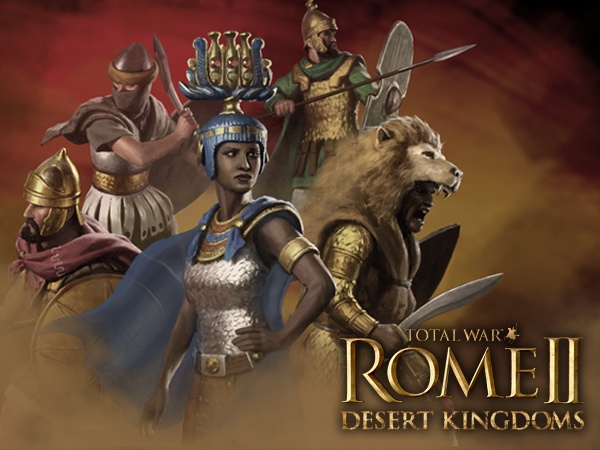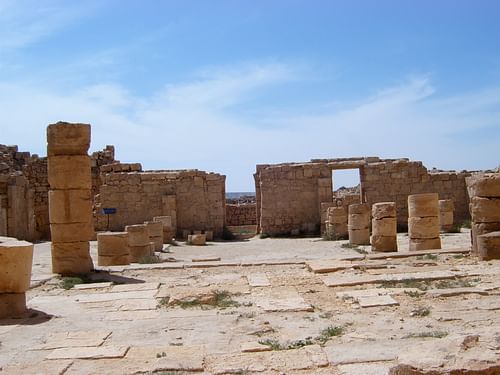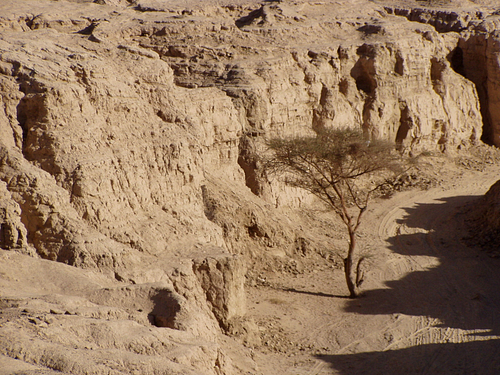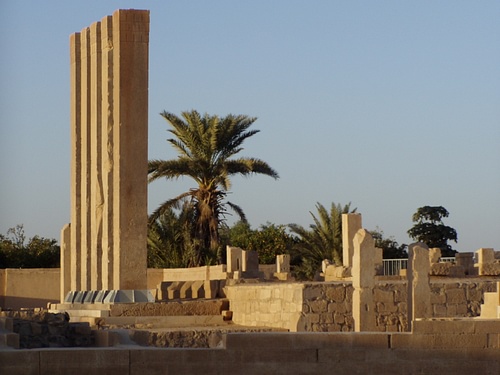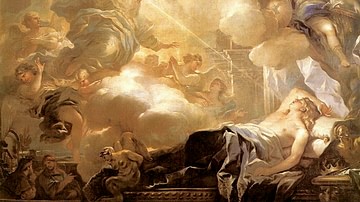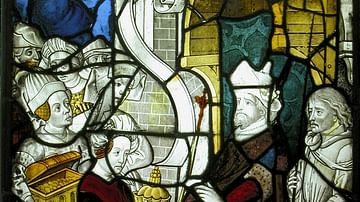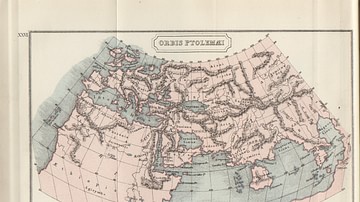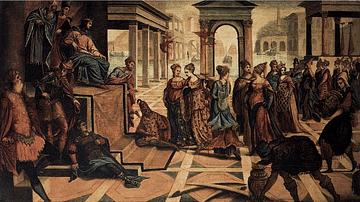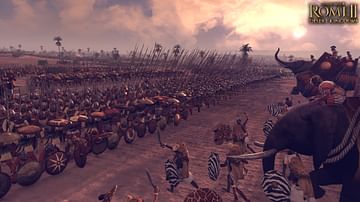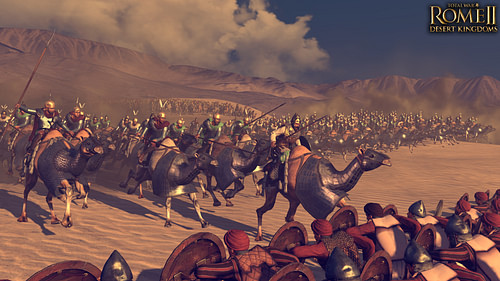
Saba (also given as Sheba) was a kingdom in southern Arabia (region of modern-day Yemen) which flourished between the 8th century BCE and 275 CE when it was conquered by the neighboring Himyarites. Although these are the most commonly accepted dates, various scholars have argued for a longer or shorter chronology with the earliest date of c. 1200 BCE; most agree on the terminus of c. 275 CE, however.
The kingdom is probably best known today from the biblical narrative in the Book of Kings 10:1-13 and II Chronicles 9:1-12 of the visit of the Queen of Sheba to King Solomon; a story also told, though with significant differences, in the Aramaic Targum Sheni, the Quran (Sura 27), and the Ethiopian Kebra Negast (though this last places Sheba in African Ethiopia, not southern Arabia). The Queen of Sheba is also referenced in the Christian New Testament books of Matthew (12:42) and Luke (11:31), and Saba appears in other books of the Old Testament (among them, Job 1:13-15, Isaiah 45:14, and Joel 3:4-8) and the Quran (Sura 34).
In its prime, however, Saba was known as a wealthy kingdom which grew rich through trade along the Incense Routes between southern Arabia and the port of Gaza on the Mediterranean Sea. Most of the biblical and quranic references – including the tale of the famous queen – reference Saba's wealth and success in trade.
Prior to the 8th century BCE, trade in the area seems to have been controlled by the Mineans of the kingdom of Ma'in but c. 950 BCE the Sabeans dominated the region and taxed the goods heading north from their southern neighbors of Hadramawt, Qataban, and the port of Qani. Sabean trade suffered during the Ptolemaic Dynasty of Egypt (323-30 BCE) when the Ptolemies encouraged sea routes over land travel, and Saba's prestige declined until they were conquered by the neighboring Himyarites.
The Queen of Sheba
Identified as Sheba, Saba is the kingdom of the queen who travels to Jerusalem to experience first-hand the wisdom of King Solomon (c. 965-931 BCE) of Israel. In the biblical tale, she brings him a gift of 120 gold talents (approximately $3,600,000.00) among other gifts (I Kings 10:10). The lavish presents of the queen would be in keeping with the wealth of the Sabean monarchy, which was legendary, but there is no evidence outside of the Bible, and the later works mentioned, that she ever existed.
The story in the Targum Sheni, an Aramaic translation of the Book of Esther with commentary, is a highly embellished version of her visit, and this version, with some differences, is repeated in the Quran, which is thought to have been written later. The story then appears in the Ethiopian Kebra Negast which adds to it by having Solomon seduce the queen who then gives birth to a son who will later transport the Ark of the Covenant from Jerusalem to Ethiopia.
The identification of the Queen of Sheba with the Kingdom of Saba has led some to conclude that she was an Ethiopian queen from central Africa since there was a Saba in Africa which seems linguistically, or at least culturally, associated with the kingdom in Arabia. Whether she was or was not cannot be answered, but it is most likely that if such a queen did exist c. 970-931 BCE, she came from the region of southern Arabia which was growing wealthy at that time from the Incense Routes it controlled.
The Incense Routes & Saba
The Incense Routes (also known as the Spice Routes) were the paths taken by merchants from southern Arabia to the port of Gaza on the Mediterranean. These trade routes were most profitable between the 8th/7th century BCE and 2nd century CE but were established earlier and still in use later. The Incense Routes covered 1,200 miles (1,931 km) and took 65 days to travel one way. Caravans would stop at a different city at the end of each day, exchange goods and rest their camels, and continue on the next morning.
Although many goods passed along these routes, the most highly prized were the shipments of frankincense and myrrh. The coast of southern Arabia cultivated these aromatics from the sap of trees but also seem to have had access to others from India through the port of Qani (also given as Qana and Qade, modern-day Bi'r `Ali, eastern Yemen). Goods were transported from the coastal kingdoms north to Ma'in and from there onwards to Gaza.
The most successful merchants on these routes were the Nabateans (best known today for their capital city of Petra in Jordan) who were able to best their competitors through control of water supplies. The Nabateans dug wells which filled with rainwater and then disguised them so that only members of their caravans could recognize and make use of them. This enabled them to travel more quickly, and cheaply, as they did not have to stop at cities or towns to barter for water. In time, the Nabateans became so wealthy that they were able to control important cities along the routes such as Avdat, Haluza, Mamshit, and Shivta, all of which became thriving trade centers in their own right.
The Nabateans and others who profited from the routes could not have done so without a central distribution center, and, initially, this seems to have been the Kingdom of Ma'in from which the Mineans controlled the incense trade. The Sabeans of Saba were already in the same region as Ma'in at this time and most likely participated in trade but it is not until c. 950 BCE that the Kingdom of Saba dominates trade and not until the 8th century BCE that they are firmly in control.
The Rise of Saba
The Sabeans supplanted the Mineans in orchestrating trade and quickly became the wealthiest kingdom in southern Arabia. Goods were sent from Saba to Babylon and Uruk in Mesopotamia, to Memphis in Egypt, and to Byblos, Sidon, and Tyre in the Levant and, from the port at Gaza, even further. By the time of the reign of the Assyrian king Sargon II (722-705 BCE), their trade routes required his permission to operate in his realm and extend through Assyrian lands. The Egyptians had been trading with the land of Punt (modern-day Puntland State of Somalia) since their 5th Dynasty (c. 2498-2345 BCE), as well as their southern neighbor Nubia but had since initiated trade with southern Arabia. Gold from Nubia traveled north to the capital of Egypt at Memphis and then overland east and south down to Saba.
Sabean kings (known as mukarribs) rose to power and commissioned great building projects from their capital at Ma'rib (modern-day Sana'a, Yemen). The most famous of these projects is the Ma'rib Dam, the oldest known dam in the world, blocking the ravine of Dhana (the Wadi Adanah). The mountainous ravine would flood during the rainy season and the dam was built to control and divert the water to the low-lying farms in the valley.
Irrigation of these farmlands was so successful that Saba was consistently remarked upon as a “green country” by ancient historians such as Pliny the Elder (c. 23-79 CE) who called the region Arabia Eudaemon (“Fortunate Arabia”), a term later used by the Romans as “Arabia Felix”. The dam, considered one of the greatest engineering feats of the ancient world, was built under the reign of the Sabean mukarrib Yatha' Amar Watta I (c. 760-740 BCE).
The economy depended on the trade of the Incense Routes but also on agriculture. The Marib dam provided such ample irrigation to the fields that crops were plentiful and were harvested twice a year. These crops were dates, barley, grapes, millet, wheat, and assorted fruits. Wine was pressed from the grapes and exported as well as consumed locally. The most important crop, however, were the trees whose sap provided the people with the aromatics of frankincense and myrrh which made the kingdom so wealthy. The historian Strabo (1st century CE) writes:
By the trade in these aromatics both the Sabaeans and the Gerrhaei have become the richest of all the tribes, and possess a great quantity of wrought articles in gold and silver, as couches, tripods, basins, drinking-vessels, to which we must add the costly magnificence of their houses; for the doors, walls, and roofs are variegated with inlaid ivory, gold, silver, and precious stones. (Geography, XVI.4)
Although Strabo was writing much later, Saba seems to have enjoyed a high level of prosperity from at least the 7th century BCE if not earlier. Great cities rose across the landscape and stone temples were erected in these cities and also outside their walls. Temples outside the cities were used by merchants and nomadic tribes and those within the walls were reserved only for the citizens of that city. The king seems to have also been a high priest and would have presided over religious festivals and supervised the operations of the temple.
Sabean Religion
The religion of the people was in many ways similar to that of Mesopotamia. The gods were thought to have created the world and the people and provided them with all good gifts. The Sabean moon god Almakah was the king of the gods and similar in many ways to the Mesopotamian moon god Nanna (also known as Sin, Nannar, Nanna-Suen), one of the oldest deities in the Mesopotamian pantheon. In the neighboring kingdom of Hadramawt, in fact, Almakah was known by the Mesopotamian name of Sin. The greatest temple in Saba – known as Mahram Bilqis, near the capital of Ma'rib – was dedicated to Almakah and was revered as a sacred site in the region long after the Sabean Kingdom itself was gone.
Almakah's consort (or daughter) was Shamsh, goddess of the sun, who shares many of the attributes of the Mesopotamian sun god Utu-Shamash, another of the oldest gods of the Mesopotamian pantheon dating to c. 3500 BCE. Other deities of the Sabean pantheon, about which very little is known, seem to be aspects of Almakah and Shamsh or Almakah only. These Sabean deities, as elsewhere in the ancient world, each had their own area of expertise, and offerings would be made to them by supplicants which included incense, livestock, and tracts of land. It is possible that, as in Egypt, this practice would have resulted in a very wealthy priestly class.
It is unknown how the priests performed their duties or if there was a priestly class, though it is assumed there was. If so, the priests would most likely have followed the same model seen in Mesopotamia and Egypt, in which the priests and priestesses cared for the gods in their temples and attended to them, not to the people. As in other civilizations, the Sabeans believed the gods were their constant companions through life and into the world which was to come after death.
People would then have forged their own personal relationship with their gods and most likely only engaged in public worship during festivals. The people believed in divination and that the gods and, perhaps, the spirits of the dead, could send messages to the living. The dead were embalmed and buried with grave goods after being anointed with myrrh, and frankincense was burned in the temples, but beyond that, little is known of the religious practices of the Sabeans.
Although the Sabeans were literate, they left very little behind by way of written history. Scholar Kenneth A. Kitchen comments:
Once the kings of Saba, Ma'in, and elsewhere began to build monumental architecture – mainly stone temples – they soon began to adorn these with suitably monumental texts, often in quite large Old South Arabian lettering. But (unlike Egypt and Assyria), interestingly, scenes and reliefs played very little part, and seem to disappear after the early 8th century BCE, leaving only texts. (Millard, 182)
These texts, however, are temple dedications, royal decrees, and acts of the court; they are not history. They do not illuminate religious practices or beliefs, the lives and achievements of the kings, the birth and activities of the gods, and how the divine interacted with the mortal realm or any aspect of the culture beyond the most basic information. If the texts were accompanied by illustrations in reliefs it might expand upon their meaning but, as Kitchen observes, they are not. They do, however, outline the basic reign of the kings and the military campaigns which expanded Sabean influence in the late 6th century.
Military Conquests & Diplomacy
There were 31 makarribs between the reign of Yatha' Amar Watta I and the man considered the greatest of the Sabean monarchs, Karib'il Watar (7th/6th century BCE). Karib'il Watar is the first ruler to reign under the title of Malik (translated as 'king') rather than the earlier makarrib designation; future kings of Saba would continue this practice.
Malik Karib'il Watar was accorded the epithet “He Who Destroys Buildings” in the course of his military campaigns against the Kingdom of Awsan and was also known as “He who Carries Out the Will of El” following his slaughter of the nomadic tribes and establishment of the borders of Saba. The “El” in this latter epithet refers to the god Almakah. Following Almakah's divine will, Malik Karib'il Watar slaughtered thousands in Awsan and then invaded Ma'in where he killed an equal number of Mineans and then imposed a tribute on them which further enriched the great temple of the god near his capital.
If it is true that the king of Saba was also the high priest of the god, then this action would have made Malik Karib'il Watar incredibly wealthy. However the king profited personally, however, there is no doubt the Kingdom of Saba benefited greatly from these wars; the kingdom is regularly referenced for its opulent wealth. Caravans from southern Qataban and Hadramwat, which had to stop in Saba on their way north, were required to pay an exorbitant tax on their goods to Almakah, as is attested to through complaints by these merchants which have been preserved.
Decline & Fall
Saba continued to thrive until the Ptolemaic Dynasty of Egypt began favoring water routes for trade over land routes. Sea and river travel was nothing new and was actually favored by the ancient civilizations because one could travel faster on water than on land. Trade up and down the Nile and across the Red Sea had been going on for millennia by this time and was engaged in throughout the height of the Incense Routes. What suddenly made a difference to Saba was Egypt's decision to cut out the middleman and deal directly with the coastal city of Qani.
Instead of goods flowing into and out of Egypt by way of Alexandria-Gaza, an Egyptian barge could now sail down the Red Sea, around the southern coast of Arabia between Punt in Africa and Qataban in Arabia, and arrive at Qani to trade directly with merchants from the Far East; Saba was no longer necessary. During the reign of Ptolemy II Philadelphus (285-246 BCE), Egyptian colonies were founded on the western coast of the Red Sea which could easily conduct trade with Qataban, Hadramawt, and Qani on the southern Arabian coast without ever bothering with the kingdoms inland. Saba began to decline along with the Incense Routes which had made it wealthy.
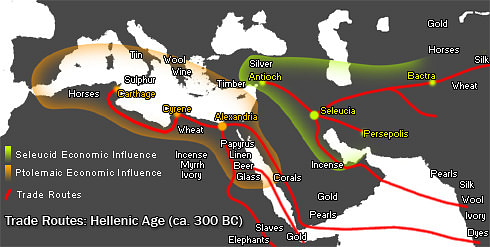
The end of Saba was not economic decline, however, but military conquest. The Himyarites of the region around Raidan on the Arabian Peninsula began to gain in power, perhaps through trade, c. 200 CE and conquered their neighbors in Qataban. Once they had consolidated their rule, they then turned on Saba which fell c. 275 CE, and then Hadramawt was taken c. 300 CE. The Himyarite monarchs took the title “King of Saba and of Raidan”, rejected polytheism, and embraced Judaism. As Christian missionaries made more converts in the region, the Himyarite kings launched a policy of persecution and may have slaughtered thousands of Christians. In c. 525 CE the Christian kingdom of Aksum in Africa invaded and conquered the Himyarites, establishing Christianity.
In c. 575 CE the Ma'rib dam failed and Saba was flooded. The Quran attributes the flood to an act of God (Surah 34:15-17) as punishment for the Sabeans refusing to accept his gifts. If so, said punishment was severe and resulted in the abandonment of towns and cities as the people were forced to leave the area or starve. A more rational explanation for the dam's failure is simply its age and lack of maintenance, although secular legends claim it was due to rats weakening the dam's supports by chewing on them.
Saba as a kingdom was long gone by the time the dam failed but the flood ensured that any coherent history of the culture would be wiped away for future generations. The Arab Invasion of the 7th century CE, establishing Islam, further obscured Sabean history which only began to attract the interest of scholars and archaeologists in the 19th century CE. At its height, however, Saba was one of the greatest kingdoms in antiquity and ruled over a land that, to many, was considered blessed by the gods.
